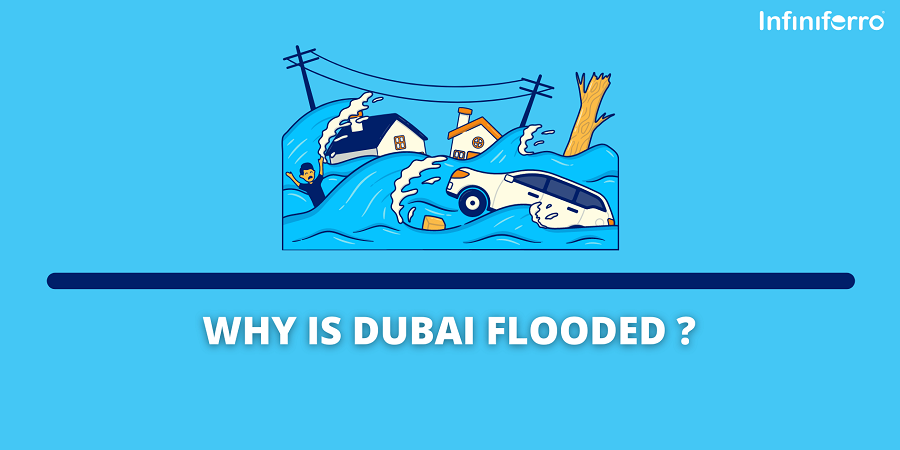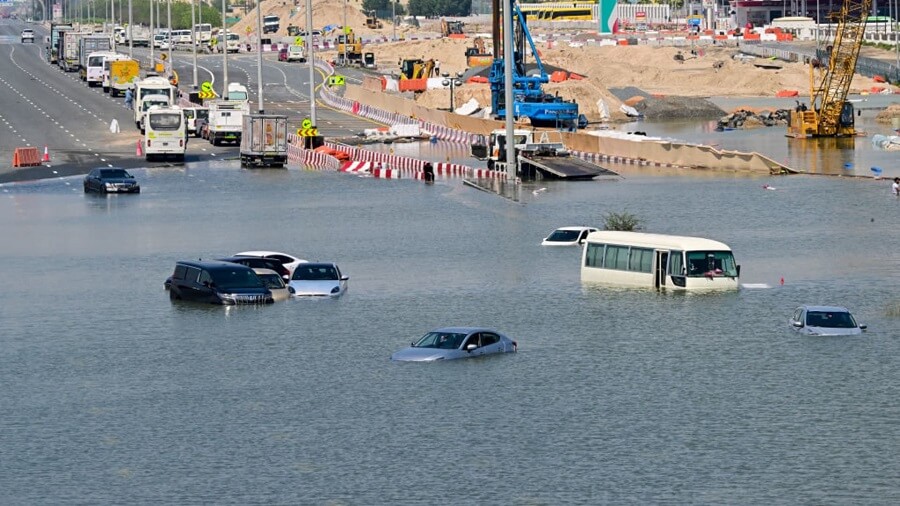
Some time ago, the world was shocked by the news that Dubai City was hit by flooding. How could it not be, Dubai, the most populous city in the UAE, has an infrastructure designed to deal with dry conditions and light rain because this city is located in a country that is in a desert area. High and intense rainfall during the winter months is the main cause of flooding in Dubai. In addition, inadequate drainage systems and inappropriate urban planning also contribute to this problem. Massive infrastructure development and rapid urbanization.
The impact of the floods that occurred in Dubai affected various aspects of people’s lives in the city. First, flooded roads disrupt transportation networks, causing traffic delays and congestion. Apart from being a hassle for residents, this also impacts business and trade. Flooding poses a risk to residents’ safety. Waterlogged roads increase the likelihood of accidents and standing water can become a breeding ground for mosquitoes and other factors that have the potential to spread disease. In addition, flooding also increases the risk of property damage.

Also Read:
- What to know about the Dubai Rainwater Drainage System Project
- Drainage Challenges and Solutions in Dubai
- Look at Manhole Covers Installed in Dubai
So, what steps can be taken to mitigate and adapt the flooding?
There are 5 ways, namely:
1. Infrastructure improvements
The drainage system and rainwater management need improvement to enhance infrastructure for managing rainwater.
2. City Planning Reform
It is a good idea to incorporate sustainable urban design principles into city planning to support green space and decentralized management strategies.
3. Early warning system
It would be good if all countries, not only the UAE, implemented advanced weather forecasting technology equipped with an early warning system so that it could warn residents and authorities regarding the possibility of heavy rain and the potential risk of flooding.
4. Community involvement
It would be good if the government educates residents about evacuation procedures, flood preparedness, and the importance of proper disposal of rubbish or waste so that it can prevent blockages in the drainage system.
5. Environmentally Friendly Infrastructure
To reduce the risk of flooding, several environmentally friendly infrastructure solutions can be created such as rain gardens and porous sidewalks to absorb and slow down rainwater runoff.
Dubai’s desert climate may seem incompatible with the idea of flooding. However, who would have thought that a city in a desert area would also be hit by flooding due to high rainfall and inadequate infrastructure. Proactive steps need to be taken by the authorities. By implementing sustainable practices and investing in resilient infrastructure, Dubai aims to overcome the challenges posed by extreme weather events while ensuring the safety and well-being of its residents.
Source:
https://en.wikipedia.org/wiki/2024_United_Arab_Emirates_floods
https://www.bbc.com/news/science-environment-68897443
https://edition.cnn.com/2024/04/25/climate/dubai-floods-climate-weather-analysis-int/index.html

Leave a Reply